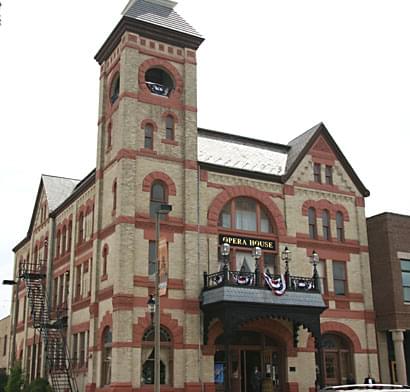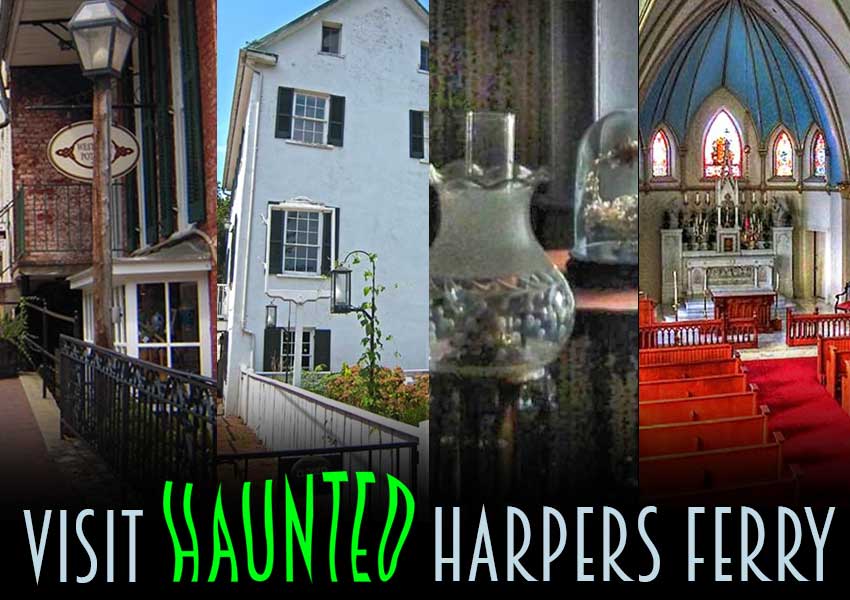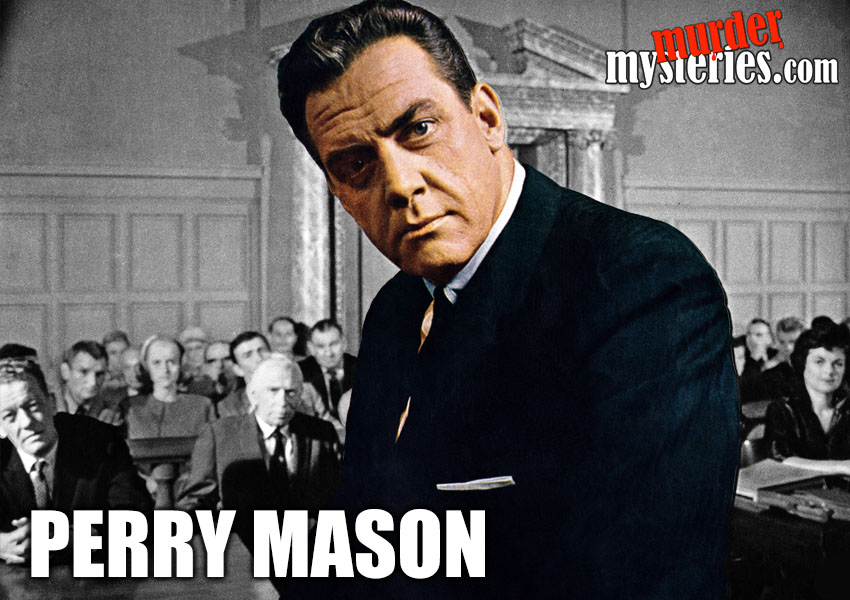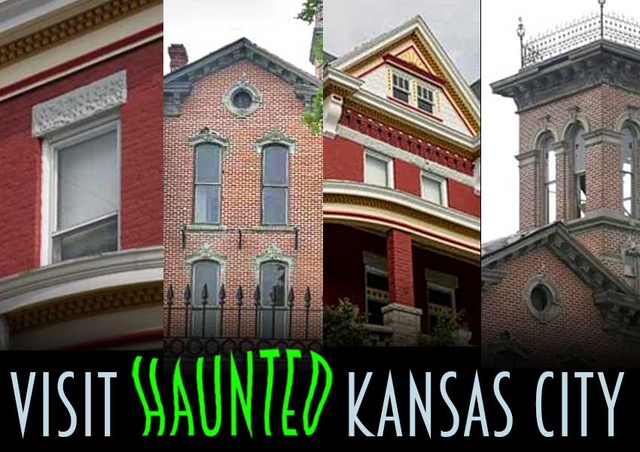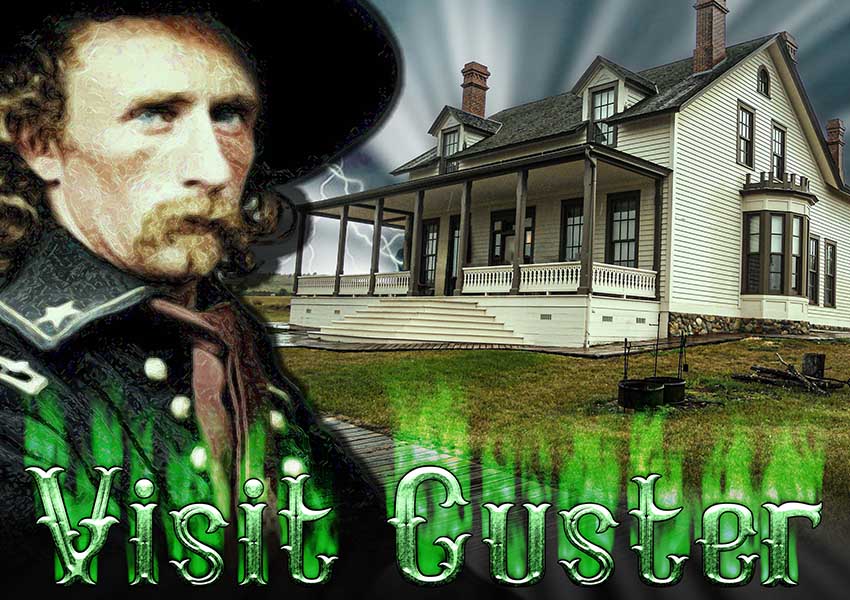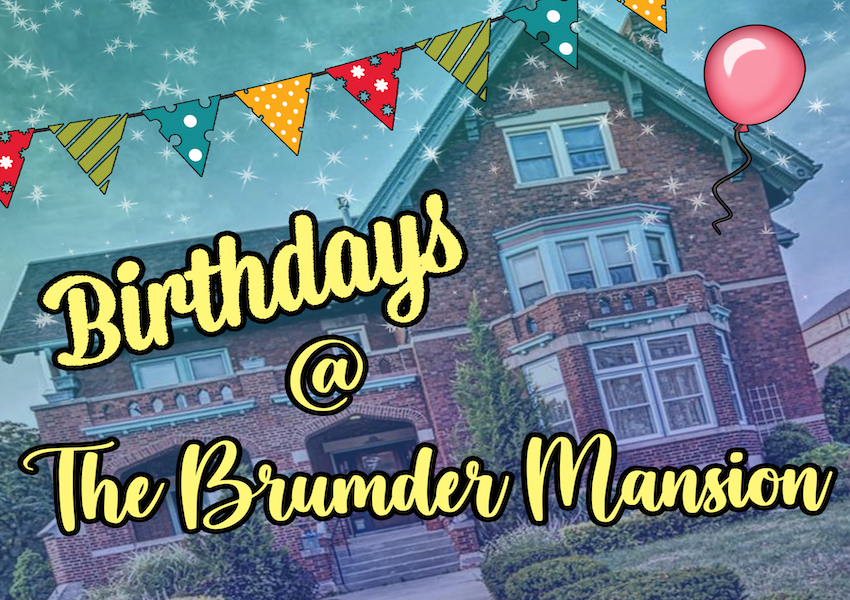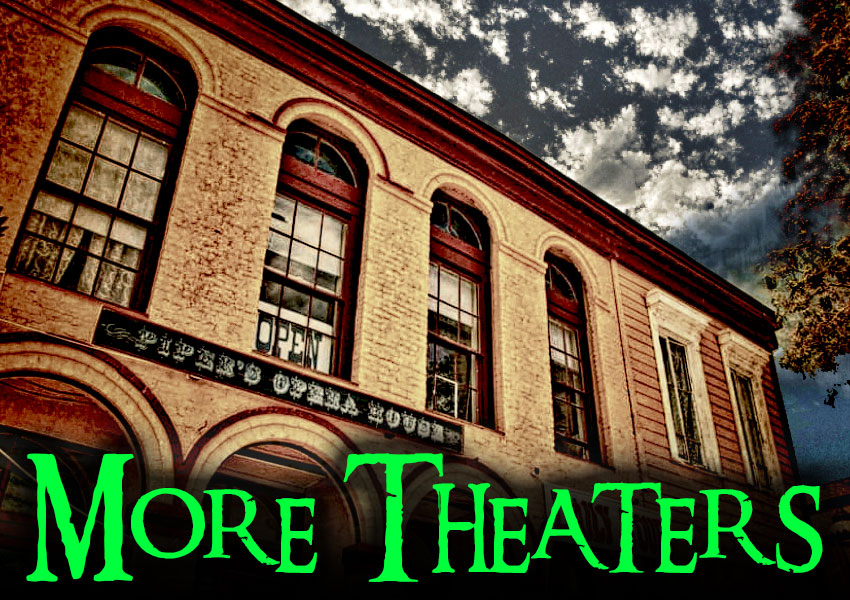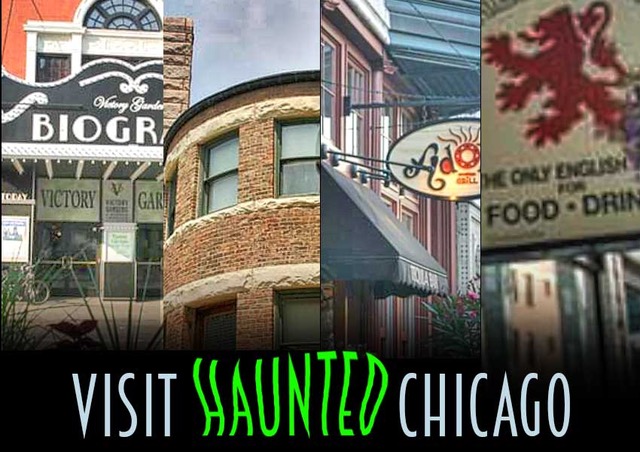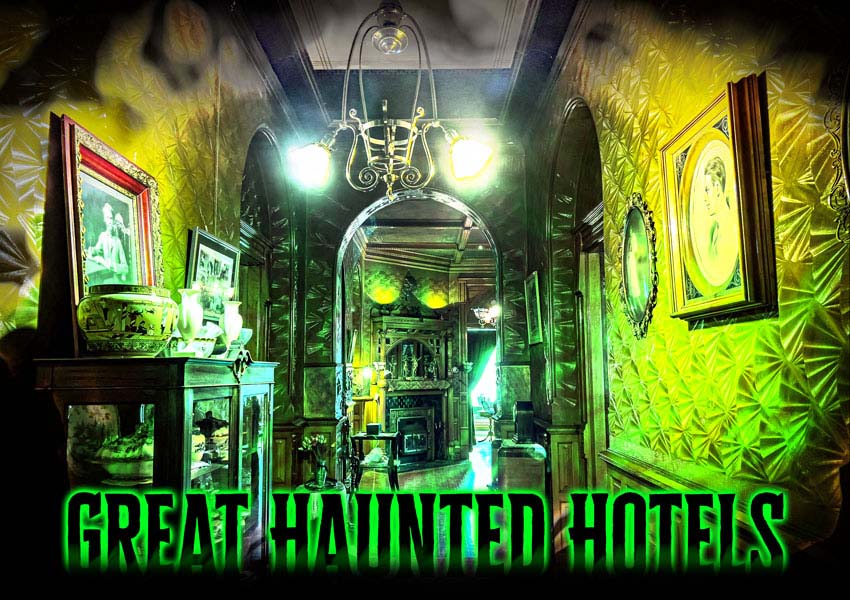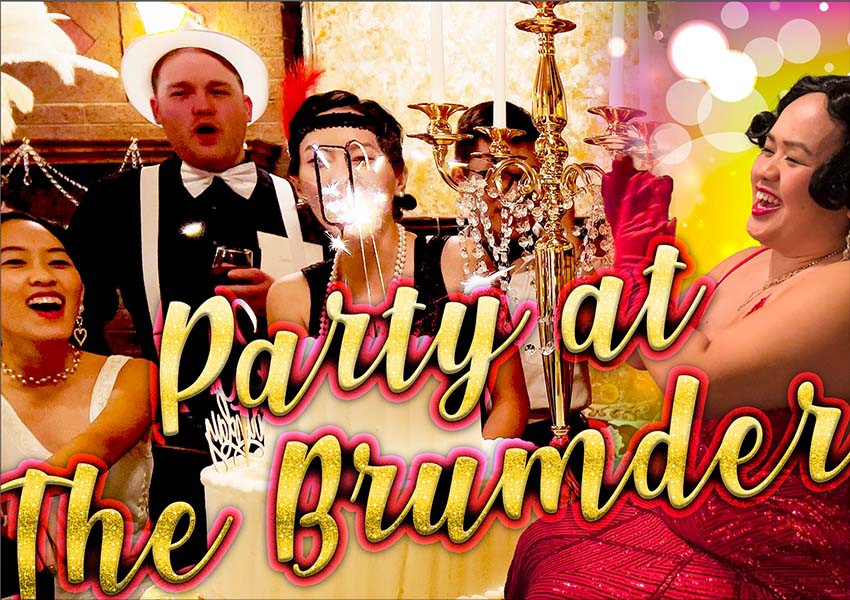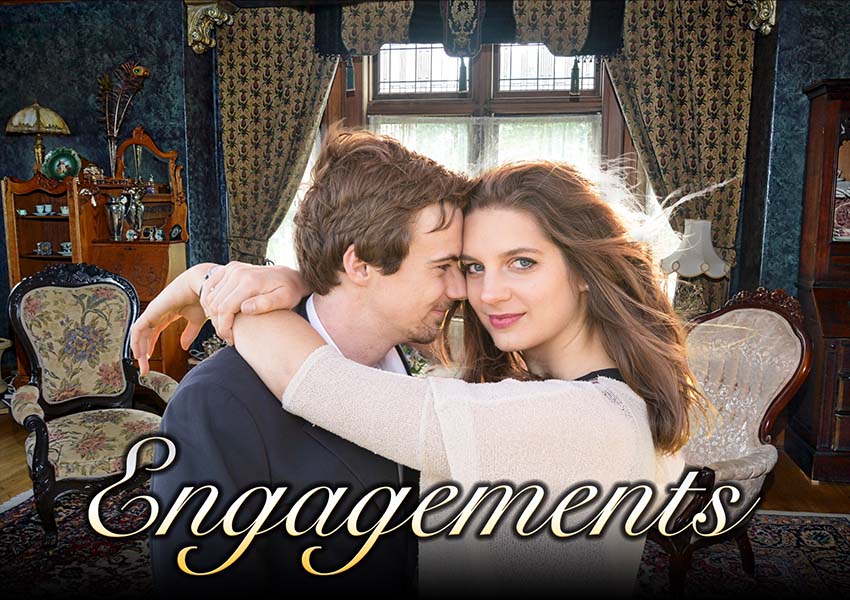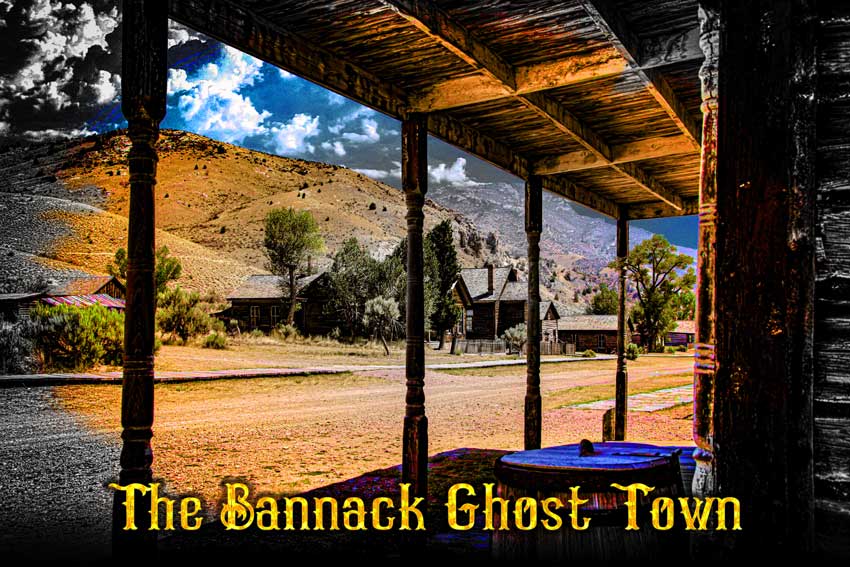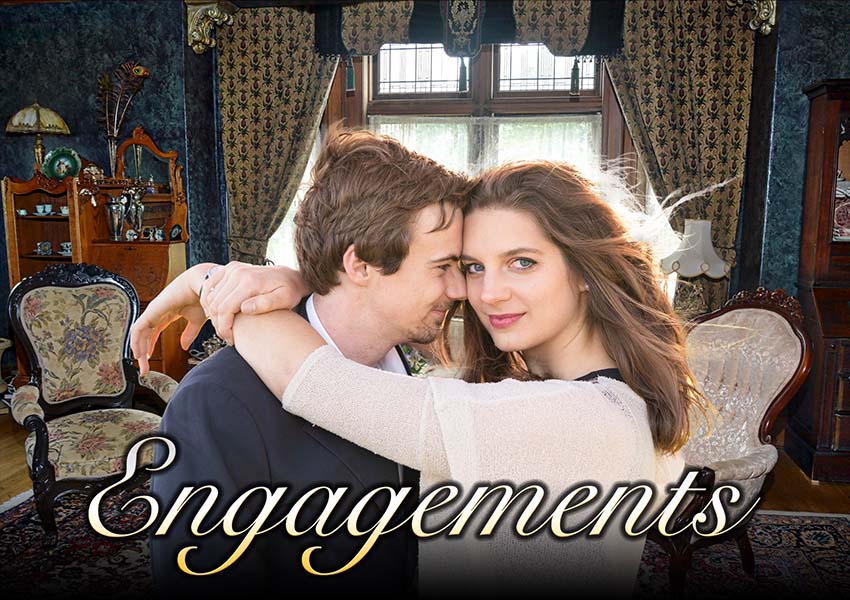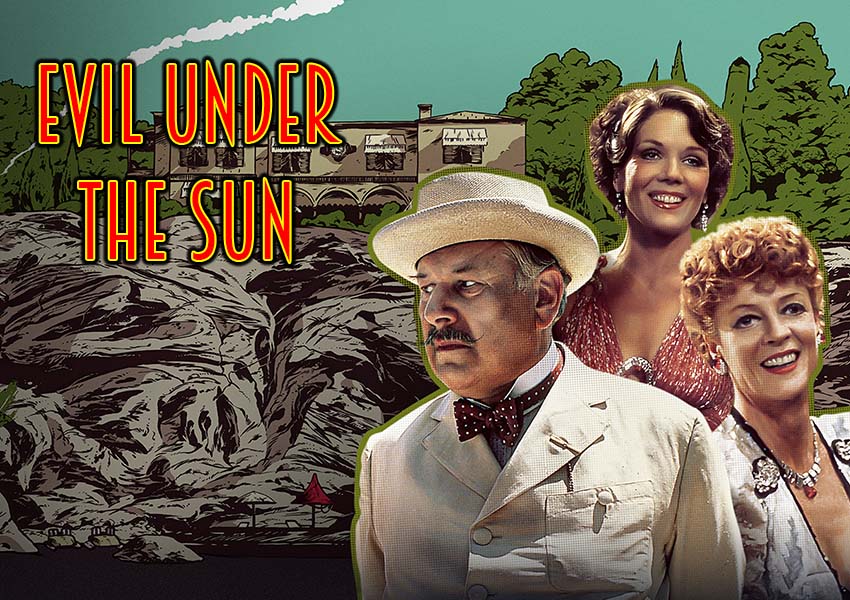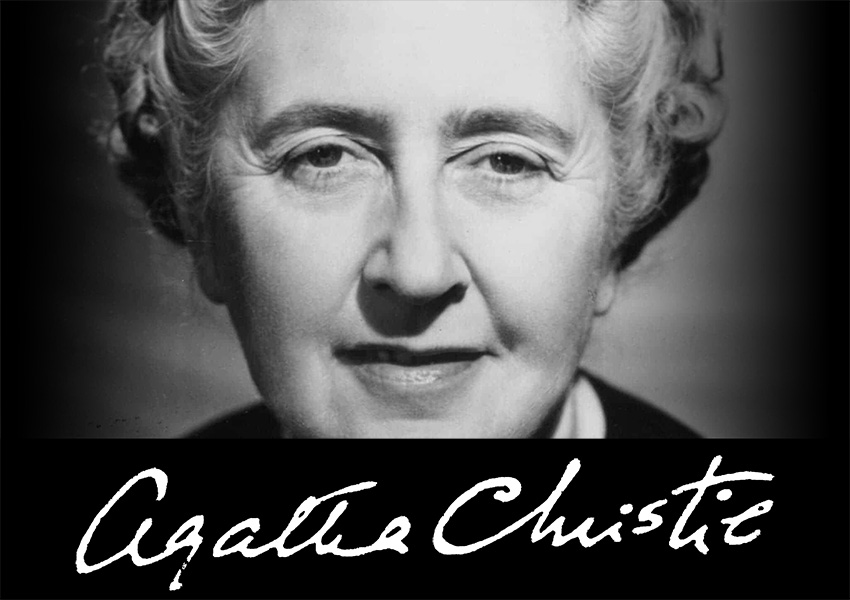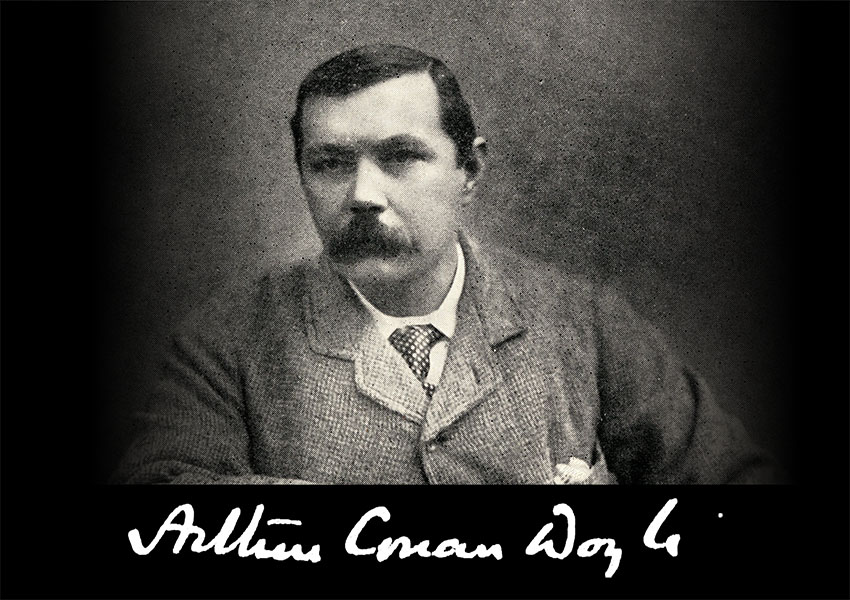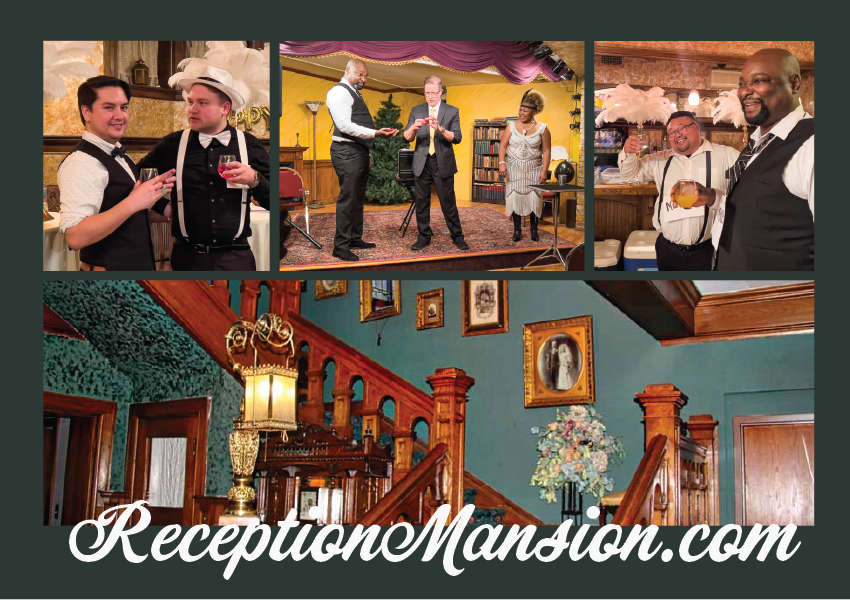Woodstock Illinois
Woodstock Opera House
An in-house actress is an enthusiastic patron and sometimes critic with high standards.
She announces her presence in dramatic ways; getting chuckles at the same time.
DESCRIPTION
The structure of the Woodstock Opera House really is a beauty; having quite a presence in the town square. Being a most handsome building, it has pleased many people as a place of city pride; just looking at it. After all, part of it was used as city hall and government offices, police and fire department; not to mention the public library.
The original buff brick with fancy red sandstone and terra-cotta trim really pops! The outside of this most loved city structure has “masonry bearing walls, iron interior columns, wood floor joists and wood roof structures.”
This old opera house, done in the Victorian style of decor, can’t be missed, as it is a four story theater, with a story and a half belfry on top of that. A winding central staircase inside the theater leads up to the main auditorium and finally the Belfry.
The Balcony has two sets of stairs, one on each side of the second floor auditorium that lead up to the balcony, that has many colored glass windows looking outside to the square below.
To bring the auditorium up to the current fire safety standards, a concrete fire wall was built to separate the stage area from the seating area in the theater. The dressing rooms that were located on the sides of the stage were rebuilt below the stage with a concrete floor.
The auditorium has the upholstered chairs that came from Chicago, that once were inside the Great Northern Theatre that had a date with the wrecking ball.
As the community arts programs located in the Woodstock Opera House grew in size, the city slowly moved out. The whole building is now dedicated to the development of arts in the Woodstock community as a performance venue and for classes in the arts.
HISTORY
The Woodstock Opera House was built in 1889 and designed as a multi-use facility with space for city administration offices, a public library, as well as police and fire departments. Specific city use, besides the library, police and fire departments, included “a council room, justice court, and second floor auditorium” for cultural events and large events that made their home here.
This very important city building needed to make a statement; to be both beautiful and practical as well. It was planned by architect Smith Hoag but came with a big price tag which explains why it took more than one voting session of the city council to pass an authorization to provide the funds needed to build this version of the Woodstock Opera House.
After finally being approved, this grand structure was built by contractor Simon Brink for a cost of $25,000; which was a boatload of money for 1889. As it sits rignt on the town square, it became the anchor showcase structure that the people in the community fell in love with and handed down the love of this building to their children.
From September 2nd, 1890, The Woodstock Opera House has been used as a classy place for cultural concerts ballet and dance performances, and theatrical shows; much enjoyed by the local community. This grand theatre started the careers of unknown thespians and comics but eventually became a magnet for established actors and entertainers seen in a variety of stage productions.
In various productions, the people of Woodstock have enjoyed the performances of such stars as Geraldine Page, Paul Newman, Betsy Palmer, Shelly Berman, and Tom Bosley, to name a few.
The most well-known favorite son was Orson Wells, who more than did his fare share of filling the auditorium with excited theater enthusiasts. In the summer of 1934, Orson and Todd School’s Rodger Hill produced the Todd Theater Festival, featuring thespians from the very exclusive boys school, of which Orson attended.
This first rendition of Summer Stock offered Hamlet, Macbeth, Triby, CzR Paul and The Drunkard. Many from the elite class of Chicago and the summer residents of upscale Lake Geneva summer resort attended.
From Chicago came Thornton Wilder, and journalists from the big papers and publications; Claudia Cassidy and Charles Collins.
Wells came back to Woodstock after that series occasionally to act in a performance on stage as did other actors and actresses who started their success in this beautiful place.
The Woodstock Opera House became a popular place to hold not only Summer Stock but also Winter Stock that offered plays all winter, since 1948. Several seasons of Winter Stock ensued; each offering sixteen plays in sixteen weeks.
Unknown thespians Geraldine Page, Paul Newman, Betsy Palmer, Shelly Berman, Tom Bosley, Betsey Palmer and Lois Nettleton were members of the Woodstock Players. They got to exercise their acting chops during the evening shows, and worked in the store and offices during the day, eventually going on to bigger projects on the road to their fame, though they did come back to participate in shows to the place where it all began for them.
Unfortunately, the theatre had evolved into a fixer-upper opportunity by the mid-fifties. It was too much of a wreck to be used for the arts anymore. Seats and risers had been removed, there was dust everywhere, the electrical system was faulty, and it became a condo for pigeons who had gotten inside to get away from the cold.
It may have been gutted and turned into something else but for the efforts of six high school theatre enthusiasts who had loved this theater all their lives and came up with a plan to restore this beloved place.
They grew in number to twenty-five young people and called themselves the Junior Civic Arts Association. In the summer of 1959, they worked on cleaning up the auditorium, scrubbing walls, floors and areas, evicting the free-loading pigeons, cleaning the draperies and everything that could be repaired like the electrical system was accomplished.
This group of mover and shakers then produced their own version of “You Can’t Take it With You,” thanks to a massive campaign to raise funds to do so.
In 1960, they ventured to Chicago to ask for and were given the chairs from the doomed Great Northern Theater and lighting equipment and drapes from the Eighth Street Theater that was also a victim of progress.
These young, go-getter thespians then put on a series of one act plays; including “Happy Journey” and “Riders to the Sea.” Finally, the interest of adults was lighted like a rocket in 1961. They formed The Woodstock Fine Arts Association and jumped in to help keep it going for this beloved Opera House!
In 1973, the Woodstock Opera House was added to the National Register of Historic Places.
Today as of 2020, the City of Woodstock still owns the building, but the building is used exclusively as a performance space, and community classes in the arts.
HISTORY OF MANIFESTATIONS
Rash acts like suicide can result in being remorseful for doing so and motivate these spirits to try to continue on in their life as if they hadn’t done the desperate act. They find ways in this world to make themselves feel better.
Stoke’s Adobe, CA (The spirit of James Stokes poisoned himself after being confronted about his pretending to be a doctor. He tries to make himself feel better by seeking peace in his forever home; but is really annoyed with all the customers in the restaurant that now exists there in Stokes forever home).
Adolphus Hotel, TX (A bride hung herself at the hotel after being stood up at her own wedding. As a spirit, she feels better after she follows living young people to be with people in her age group).
Woodstock Opera, Il (A distraught young ballet dancer Elvira, killed herself here and now stays on as the spectral arts enthusiast, coach and critic. In order to feel better about herself, she is not above possessing other young women but the living are there to stop her plans).
The story is told that in the early 1900s, a young ballet dancer became distraught when she didn’t get the part in a ballet after auditioning for this coveted role; a part she really wanted. In a fit of emotion, she ran up the inside winding staircase, and threw herself from the belfry portal, falling five and a half stories to her death.
Hopes and aspirations of artists that are thwarted by other competitors or circumstances beyond their control can cause a restlessness in life and afterwards; trying to insert themselves in this life anyway they can.
Albany State Capitol, NY (William Morris Hunter was very proud of his artistic endeavors; his glorious forty foot murals, in a place of honor; an artist’s dream! Imagine his disappointment that they were hidden from sight just ten years later, when the new ceiling was installed! Apparently, the spirit of William Morris Hunt still isn’t amused, and still having issues!).
Washington Opera House, KY (A spirit of a dancer who died of an illness before she could finish her schedule of performances on this stage, is spending her after-life here; expecting respect and trying to be helpful).
Sacramento Theatre, CA (Spirits of former thespians who loved performing here, stick around to support actors and actresses, living the performing experience through these living actors and actresses).
Woodstock Opera, Il (This spectral dance artist mentioned above has not only become Woodstock Opera’s in-house spectral actress, but a spectral supporting patron and sometimes volunteer critic to keep the thespians on their toes).
Spirits who yearn to be noticed still find ways to announce themselves as being there; bringing amusement to themselves as well.
Riverside Theatre, WI (Spirits here find funny ways to get attention; like floating paper from the ceiling of the theater).
General Wayne Inn, PA (Spirits of Hessian soldiers had a lot of fun playing little jokes on the people who came to sit at the bar).
Mantor Opera House, MN (Spirits interact with actors and actresses when they are dressing for a show; sometimes appearing in the same costume they wore while performing in the same play during the era they were alive).
Woodstock Opera, Il (Spirit of Elvira plays little and big jokes to let everyone know she is there).
Spirits of theater enthusiasts in the audience as well as from the stage still do enjoy watching the performances of living thespians.
Riverside Theatre, WI (Spirits of dancers, thespians and stage workers still love to watch the performances here).
Grand Opera House, WI (Enthusiastic spirits love to watch thespians rehearse on stage).
Cincinnati Music Hall OH (Full-formed apparitions of men and women dressed in their finery of decades ago, have been known to join the living for the night’s performance in the Music Hall).
Woodstock Opera House, IL (The Spirit of Elvira enjoys watching rehearsals; sometimes joined with other spirits of dancers, thespians or other theater workers).
MANIFESTATIONS
The strongest spirit who resides here has been named Elvira by the staff. While she has a few quirks, and has an unacceptable desire, she has taken on the volunteer role of theatre critique and tries to coach thespians in her own way as she enjoys the rehearsals from the peanut gallery.
Spirit Known as Elvira
People who have seen her see-through apparition have described her as being a beautiful woman
Her blond hair hangs below her petite waist. She dresses in a “filmy, dancing gown,” the kind used for ballerinas in dance productions.
She has been seen in the theatre auditorium, in the halls and looking out the upper windows.
Elvira’s Desires
To try to heal her guilt and regret in committing suicide, she has a plan that is thwarted by stage hands who carefully watch the staircase during try-outs for upcoming stage productions.
She doesn’t want to be the only actress who killed herself here.
Apparently, this spirit of Elvira occasionally possesses actresses who have just tried out for a part in a stage production and tries to lead them in a hypnotic state up the staircase to the open portals.
The assigned stage assistant stops them and brings them to safety long before they get too far. It is said from one source that many artists/ thespians have been pulled from the stairs by the assigned stage assistant.
Elvira Desires Both Attention and Chuckles!
Elvira has found ways to let the living know that she is there and to cheer herself up.
She likes to move props. Perhaps Elvira rearranges and sticks them in odd places that a living person wouldn’t of thought of.
Elvira likes to do other mischief in the theatre; such as unfastening scenery flats so they fall over.
Elvira as Theater Enthusiast
Though she was a dancer, and can no longer be in performances as a dancer, she can still enjoy other performance arts that are presented on this stage.
Watching thespians’ acting and singing on stage during rehearsals seems to be her favorite rehearsals to sit in on.
Seat DD113 is Elvira’s favorite seat in the audience seating area. All the seats are spring-loaded; meaning that they stay in the upright, folded position, unless someone is sitting in them.
Actors, actresses and stage hands have often seen seat 113 in the down position, as if some unseen presence was sitting in it, watching the rehearsal. After examining the seat 113, it is always found to be working properly, staying in the upright position.
Elvira as Thespian Coach
As she sits there in seat DD113 during rehearsals, she can’t help but sometimes comment through auditory means.
Elvira expects high standards to be maintained by the cast of any production, like any demanding director.
Thespians who are rehearsing here better be on their toes! Whenever a performer misses a cue, or bungles a line, or sings out of key, a low, deep sigh of annoyance is often heard, coming from seat 113.
Other Spirits of Theatre Enthusiasts
Elvira has the company of other spirits: probably past thespians /workers/directors who love this theatre.
They all watch the rehearsals together sometimes; never dreaming of taking a seat of a paying, living patron during a real show.
In the 1940s, while a young Shelly Berman was on the scenery detail here, he was working on some scenery for an upcoming production, late one evening. Suddenly, he heard a noise from the audience seating, which made him look in that direction.
He saw that not only was seat 113 in the down position, but several seats in the same row as 113 as well.
Not afraid, Berman ran quickly over to the seats, but by the time he got to them, all were up in the correct, upright position.
PARANORMAL FINDINGS
People have been having experiences with the spirit of Elvira for many years and they know she is there.
No paranormal investigation footage has been made public on line.
STILL HAUNTED?
Most Probably so, despite what the official line about her; stated by The Woodstock Opera House. They claim that they
- do not
have spirits, and that this was a story started by Orson Wells himself.
Too many thespians on stage have been panned by her, too many people have experienced her jokes and have been witnesses to her unseen and seen presence and even witnessed the influences thrust upon the living; especially actresses who try out for a part..
LOCATION
121 Van Buren Street
Woodstock, Illinois 60098
(815) 338-5300
The Woodstock Opera House was built almost a 100 years ago, in the old, northern Illinois community of Woodstock. It is a local landmark, found right in the middle of Woodstock’s old town square, among Victorian homes and buildings.
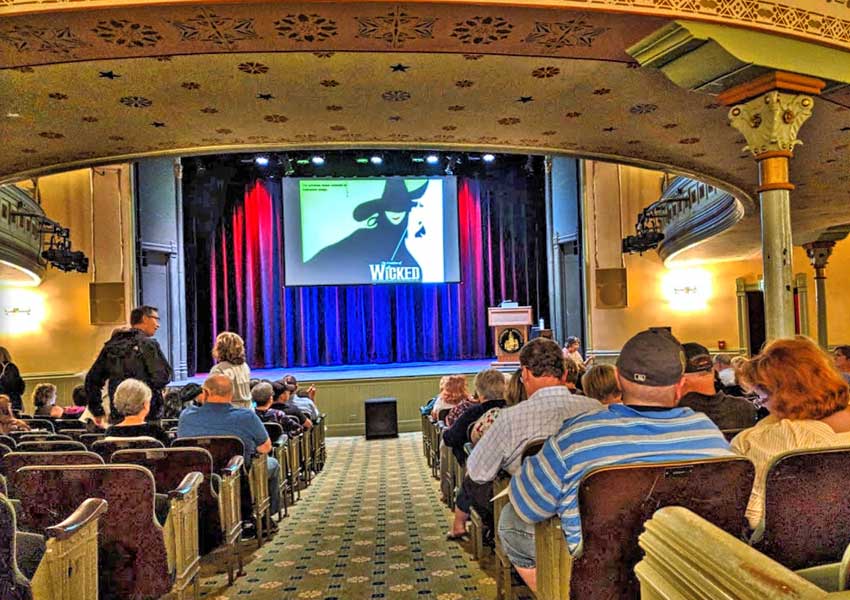
SOURCES INCLUDE
The Haunted Directory, by William Dennis Hauck, Puffin Publishers, 2002.
illinoishauntedhouses.com
gis.hpa.state.il.us
wikipedia website, Woodstock Opera House page.
The Most Haunted Opera Houses in America, by Travel Channel
travelchannel.com
Our Haunted Paranormal Stories are Written by Julie Carr
Visit the memorable… Milwaukee Haunted Hotel
